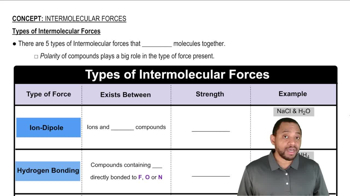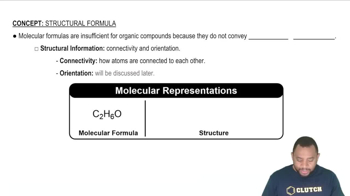Here are the essential concepts you must grasp in order to answer the question correctly.
Intermolecular Forces
Intermolecular forces are the attractive forces between molecules that influence physical properties such as boiling and melting points. These forces can be categorized into several types, including hydrogen bonding, dipole-dipole interactions, and London dispersion forces. Understanding these forces is crucial for predicting the behavior of substances in different states of matter.
Recommended video:
Intermolecular vs Intramolecular Forces
London Dispersion Forces
London dispersion forces are a type of intermolecular force that arise from temporary fluctuations in electron density within molecules, leading to the formation of instantaneous dipoles. These forces are present in all molecules, regardless of polarity, and are particularly significant in nonpolar substances like nitrogen gas (N2). The strength of these forces increases with the size and polarizability of the molecules involved.
Recommended video:
Types of Intermolecular Forces
Molecular Structure of N2
Nitrogen gas (N2) consists of two nitrogen atoms bonded by a triple covalent bond, resulting in a diatomic, nonpolar molecule. Due to its nonpolar nature, N2 does not exhibit dipole-dipole interactions or hydrogen bonding, making London dispersion forces the only type of intermolecular force present. This understanding helps explain the low boiling point and gas state of nitrogen at room temperature.
Recommended video:

 Verified step by step guidance
Verified step by step guidance


